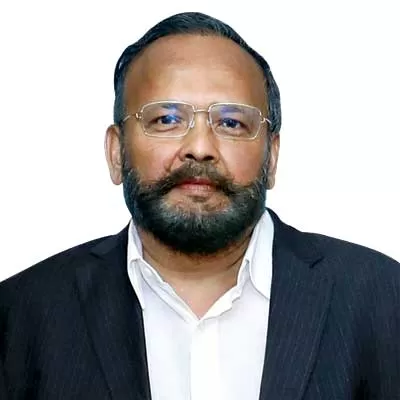Genesys secured a record-breaking contract for Mumbai's Digital Twin Initiative worth Rs 1.55 billion with Brihanmumbai Municipal Corporation (BMC). Under the agreement, the company will provide the implementation and upkeep of a 3D city model and map stack for Mumbai and update it for three years. The geospatial solution will redefine urban planning, infrastructure development and emergency response and foster enhanced quality of life for residents. The unified mapping platform incorporates layers such as the 3D reality mesh model, base map with advanced features and street imaging, digital surface model (DSM) and digital terrain model (DTM) along with a change detection map to empower municipal departments, government agencies and citizens to make informed decisions that contribute to the city's growth. Holding promise beyond traditional mapping, it is aligned with the city's vision of becoming a smart city. Sajid Malik, CMD, Genesys International Corporation, shares more about the challenges, potential and prospects of Mumbai's Digital Twin Initiative and the requisite technology in conversation with R SRINIVASAN. Excerpts: What difficulties are involved in the creation of a 3D model of the city’s infrastructure in all 24 wards?Bombay is one of the most complex cities as it has all kinds of terrain. It is very dense. There are old parts of the city, shanty towns, a huge slum, probably one of the tallest high rises you can find in any city and one of the busiest airports in the country. Given all these variables, creating a 3D model of almost every square inch of the city is an interesting challenge. We hope to finish it soon. With all the applications in place, the project will go live in the middle of the upcoming year.How can citizens contribute to the city’s development?Citizen contribution comes in the form of user-generated content (UGC), which is present to highlight issues. You can do it at every building level because of the platform’s accuracy. Citizens can essentially solve micro problems. Many a time, if a car gets stalled on the highway, it may create a traffic jam for many kilometres behind. We consider the digital twin as an angiogram of the city. So, we accurately map every blockage in the city using real-time probe data, which allows us to accurately assess what can be done to solve the problem at a very micro level. There are some large infrastructural projects like the Coastal Road project or Atal Setu bridge. But there are also multiple problems at a sub-locality road level, which are being resolved by our digital twin platform. I gave you the example of a car getting stalled. Also, there are low-lying areas prone to flooding – for the first time, we are creating an accurate DSM and DTM that allow cities to know which areas to focus on. Some people complain about too much digging of roads. We can render a more accurate right of way. Other people complain there are too many telecom towers. We can optimise the telecom tower networks… and so on.How is this different to traditional mapping and how will it revolutionise the response to emergencies, manmade (terror attacks) and natural (earthquakes, etc] emergencies?Some time ago, we read that a fire engine could not access a particular building in Worli. We are now in a position when there is a first responder. One can accurately gauge the height of the building, size of the road, the terrain, what kind of truck can go there, and the possible collateral damage in case of a situation. Think of this as a comparison to what is being used traditionally – a 2D map. In a 2D map, you see a polygon but you have no idea what the structure is about. On the other hand, a digital twin gives you an accurate and precise idea. It is not just a visualisation layer or like a satellite image – it is an actual replica of the structure. Thus, you can intuitively see that any emergency response would be far better. You can also integrate real-time data or CCTV data with our platform. So, you get a much better perspective. If you are staring at 1,000 CCTV cameras, you don't have a perspective as to where it actually belongs in the city. But when you integrate it on our platform, you get a clear idea of the POV of every camera and the response would be much faster.Also, you can integrate seismic data to understand which area would be more prone to earthquakes. You can’t predict an earthquake but a simulation can be done. We had done an exercise for the National Disaster Management Authority (NDMA) many years ago where they wanted to know about the vulnerability of every building during an earthquake, which area would undergo maximum damage and where evacuation would happen. These things can be done. Clearly, an earthquake in Lower Parel would have a greater impact than some other areas with lower population density or not very tall structures. What challenges do organisations face when implementing digital twins for complex systems?Creating digital twins of any geography is deep technology, combining human skills and experience with multiple technologies like data capture, storage and processing. It also includes logistical planning and different types of map data, such as points of interest, road networks and 2D base maps. The making of digital twins starts off with aerial surveys of the geography. Genesys leverages various modes of data collection, including aircraft and drones. Each method presents its own set of pros and cons. For example, adverse weather conditions like solid winds or haze can disrupt operations, leading to delays and increased costs.The Genesys constellation of sensors includes Lidar cameras and street-view cameras, ensuring superior data precision. One of our innovative collection methods features backpack-based systems for on-foot surveys in densely populated urban areas. These specialised tools enable us to capture high-quality data from the most challenging environments, setting our digital twins apart in terms of detail and reliability.After collecting the data, the next step is to store a humongous amount of data, computing power to process it and then integrating it into a digital twin. Navigating this phase involves carefully maintaining the quality and consistency of the data, while ensuring it meshes well with existing systems. Ensuring interoperability among different system components requires careful attention, especially when they use various formats and languages. Moreover, protecting the privacy and security of digital twins is essential, given the sensitive data they contain. To maintain their relevance and accuracy, digital twins must be regularly updated and closely monitored.What types of sensors, technologies and data are used to create a comprehensive digital twin?To create a comprehensive digital twin, we combine advanced aerial sensors with multiple optical cameras and LiDAR integration, which allows us to capture various aspects of the physical system, including detailed imagery and spatial data. We also incorporate terrestrial LiDAR integrated with street-view imagery and data sources, as mentioned above. In addition to sensor data, we use IoT devices to monitor environmental conditions such as temperature, humidity and pressure. Motion sensors, cameras and acoustic sensors are deployed to track movement and detect abnormalities. To further enrich our digital twin, we leverage technologies like building information modelling (BIM) to develop detailed 3D models of buildings or infrastructure. These models enhance visualisation and facilitate better decision-making during the design and operation phases. Further, we integrate data from various sources such as GIS, CAD and IoT platforms to provide a comprehensive view of the system. Historical data, maintenance records and real-time operational data may also be incorporated.What measures are in place to ensure the security of data associated with digital twins?Protecting the data linked with digital twins is crucial because the information is sensitive. This covers exclusive methods, tools and operational data. Security steps can involve encrypting data during transit and at rest, which means encrypting data while it's moving and when it's stored. And employing authentication and authorisation protocols to verify user identity and permissions and setting up controls to limit who can see or change the data. It also includes conducting regular security audits and vulnerability assessments and adhering to industry standards and regulations. Together, these measures form a robust framework that protects the integrity and confidentiality of our digital twin data, ensuring it remains secure from external threats and internal mishaps.What challenges exist in integrating data from various sources (AI, etc) into a cohesive digital twin for construction projects? Developing a digital twin for construction projects is a complex, technology-driven endeavour that requires seamless integration of various data sources, including AI. Our company has been a leader in such innovations, employing cutting-edge technology to tackle the multifaceted challenges associated with creating effective digital twins. Our sophisticated integration techniques ensure that all data elements – whether from IoT devices, drones or AI outputs – are synchronised and accurately represented within the digital model.Combining data from various sources, including AI, into a unified digital twin involves managing the heterogeneity and complexity of data as different systems and sensors often produce data in various formats or use distinct standards. Imagine assembling a complex jigsaw puzzle where each piece has its unique shape. Our company excels in fitting these pieces together to create a clear, accurate representation of the construction project, which not only solves the interoperability issue, but also enhances the precision and utility of the digital twin.It is important to uphold data quality and consistency as inaccuracies or inconsistencies in input data can lead to faulty predictions or simulations. To produce accurate insights and predictions, AI models analysing the data must be trained on representative and diverse datasets.




















